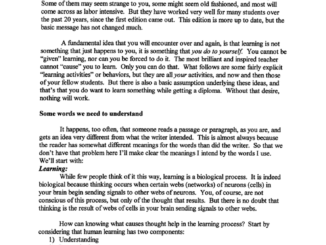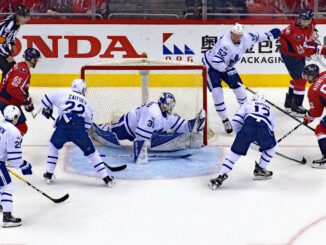
Some fitness coaches who specialize in hockey training insist that hockey players should stay off the ice during the summer months. The advocate a return just in the weeks prior to training camp. Some believe that riding the bike is the best mode of energy system development for hockey players. Others, like me, use a combination of modes to train hockey players who will be fitter, faster and more injury resistant.
The elite level players that I train skate 1-2 times per week. Some of them go to the local power skating guru and work on their skating skill. This is my preference, I do not really want them scrimmaging, I want them skating. For the pro players, we go on the ice twice per week, once for medium duration interval sessions and once for agility and quickness training. The skating is supplemented with land-based agility training, a track or hill workout and yes, even some biking. You may be asking yourself, “What is the difference? As long as they are getting more fit what does it matter if they only bike or not?” To be clear, I am not saying that hockey players should not ride the bike. I have my hockey players ride the bike at times during the summer, just not all the time. And I think it is a great tool to use during the season. Here are a few of the pros and cons of using the bicycle with hockey players:
PROs I like biking because you can very easily adjust the resistance. It is relatively safe; no athlete is going to sprain their ankle riding the bike. From a skill perspective, there is a level playing field for different athletes. If you are running at the track, some hockey players have a great running stride whereas some athletes are not nearly as proficient. Finally, the player will get a great leg workout. When we do intervals on the bike they will tell me that their legs feel the same fatigue they feel when they are on the ice.
CONs I dislike the bike because it trains the hockey player in a hip flexed, spine flexed position, a position where they already spend a good amount of their time on the ice and sitting on the bench. If they are a student then they spend all day sitting at their desks in a hip flexed, spine flexed position. With these sustained postures we see shortening of the hip flexors among other adaptations. When a player skates she must extend at the hip to get a full powerful stride. If the hip flexor is tight they will not be able to get this range from the hip joint and will likely compensate by either taking short choppy strides or by hyper-extending the lower back. This will reduce their skating performance and may lead to overuse injuries.
One of the arguments against skating in the off-season is that it lets the player’s groins recover from the use they get when skating. This is used to support the use of the bicycle as a training tool. If you look at someone bicycling you notice that their thighs stay parallel as they pedal, the movement is in the saggital plane. So you can see how this will not put the groins on a stretch the way skating does.
If I take an athlete who needs to abduct at the hip (which puts stretch on the adductors or groin muscles) to move in their sport and train them in a way that does not put any stretch on those muscles, can you see how they may adaptively shorten in response to the new demands? They are not being repeatedly stretched, so they do not need to be as long and they will shorten. Then if the athlete starts skating everyday, they are now putting those adaptively shortened groin muscles on repeated stretch and risk a strain. Not a great way to start training camp.
So my argument against riding the bike in the off-season is that it compounds muscle imbalances that already occur in hockey players and undoes some of the adaptive lengthening that is necessary in the adductor (groin) muscles. Both may reduce skating efficiency and contribute to overuse injuries.
I will finish by saying that there are some amazing fitness coaches out there who specialize in training hockey players, love the stationary bike, use it effectively as a part of their overall hockey training system and produce some very effective players. Clearly they are addressing the muscle imbalances and mobility issues in other areas of their training. My goal is to encourage you to continue thinking about the specific demands of hockey on your athletes and train them systematically with those demands in mind.
Unless otherwise stated, PONIREVO and/or its licensors DO NOT own any intellectual property rights in the website and material on the website. Majority of the site’s content has been scraped and auto posted by a third party artificial intelligence program —– PONIREVO Creation Team.
Proudly WWW.PONIREVO.COM



